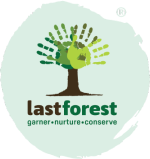Thyme & Cinnamon Honey Combo
250g Each
Thyme Honey
Wild honey with infused thyme leaves! An enchanting fragrance infused with the goodness of sustainably harvested honey!
Multi floral - the Giant Rock Bees pollinate from the diverse flowers available in the Nilgiri Biosphere Reserve, giving the honey unique colors and benefits.
Unprocessed - This honey is unprocessed - all the nutrients present in the honey remain in tact right from the process of collection to bottling.
Sustainably Harvested - Methods used in the harvesting of this bottle of honey are sustainable, ensuring the bees return to the hives after the honey is collected.
Real Infused Thyme - Real, homegrown Thyme is infused in this bottle of honey, bringing you a fresh flavor in every drop of honey!
Uniform Infusion Process - Thyme leaves are infused in the honey, giving you the best of both worlds of forest honey and rosemary leaves!
Eco Friendly Packing - This bottle comes in a complete eco-friendly packing - corrugated boxes tailor made for the bottle, ensuring zero breakage and contributing to rid the planet of harmful packaging!
Cinnamon Honey
Bringing to you another truly remarkable product from the forest, Cinnamon Honey to let the happiness flow through you!
Multi floral - the Giant Rock Bees pollinate from the diverse flowers available in the Nilgiri Biosphere Reserve, giving the honey unique colors and benefits.
Unprocessed - This honey is unprocessed - all the nutrients present in the honey remain in tact right from the process of collection to bottling.
Sustainably Harvested - Methods used in the harvesting of this bottle of honey are sustainable, ensuring the bees return to the hives after the honey is collected.
Natural Spice Extracts - The best spice extracts are infused in this bottle, bringing you the freshest, most aromatic smell and taste to your palate!
Uniform Infusion Process - The spice extracts are uniformly infused in the honey, giving you the best of both worlds of forest honey and cinnamon extract!
Eco Friendly Packing - This bottle comes in a complete eco-friendly packing - corrugated boxes tailor made for the bottle, ensuring zero breakage and contributing to rid the planet of harmful packaging!
Know more about honey HERE.
Ingredients
Unique Honey Rainbow
Other Details
Product information
'Pioneering sustainable living choices by
connecting communities and markets'

Frequently Asked QuestionsAny more questions? We got you covered!
Why is my honey crystallizing/crystallized?
What are the health benefits of honey?
How is honey collected?
Why wild honey?
Is Last Forest [honey] organic certified?
Does honey expire? How long does my honey last?
Is Last Forest [honey] organic certified?





























